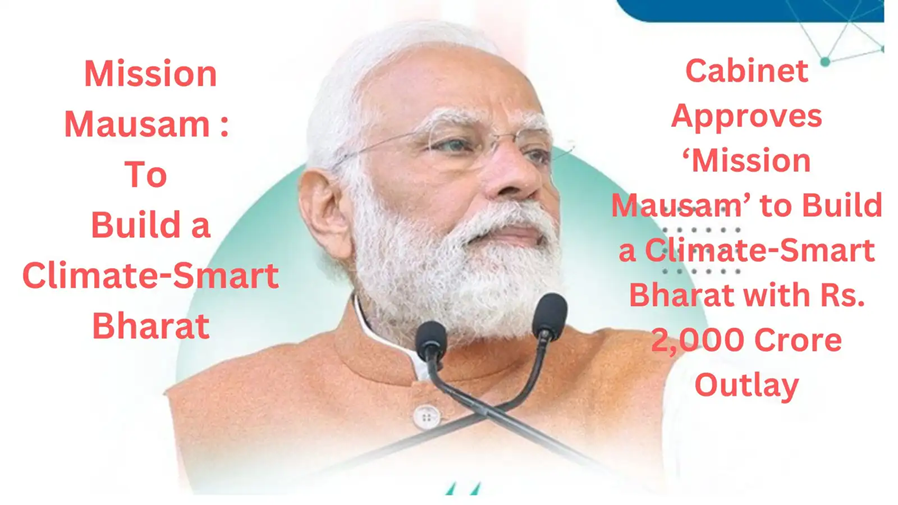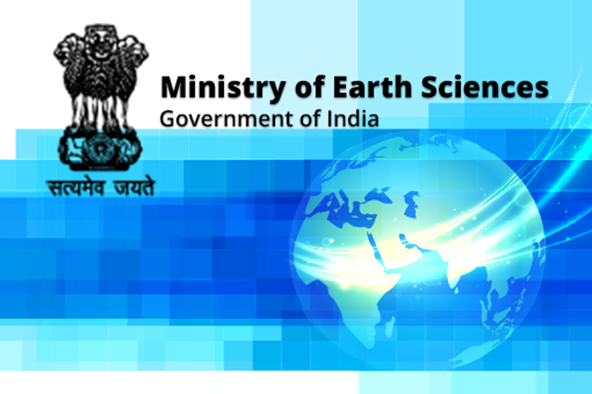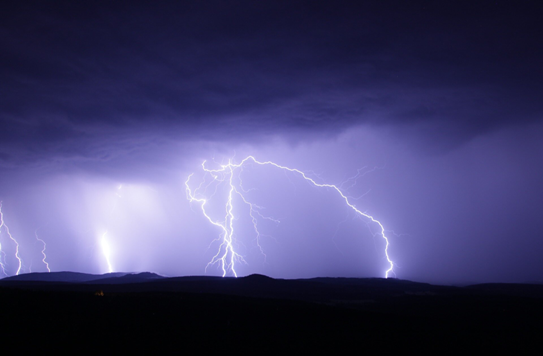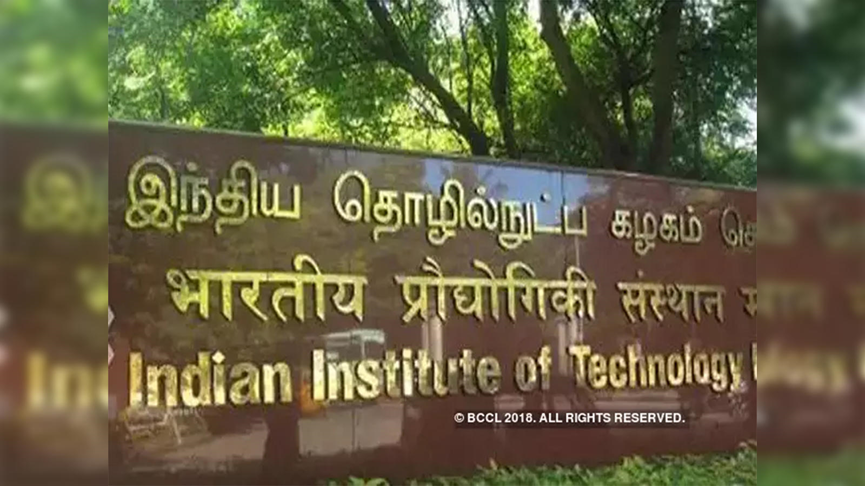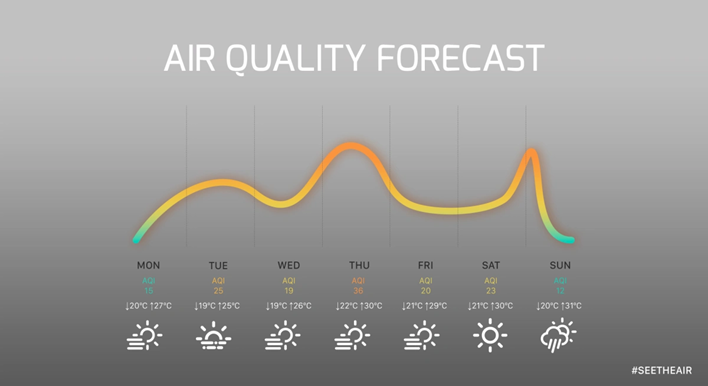Union Cabinet approved Mission Mausam on September 11, 2024, with a budget outlay of 2,000 crores over two years, is an ambitious initiative of the Government of India. It aims to make India ‘Weather Ready’ and ‘Climate Smart’. The mission seeks to exponentially enhance the country’s weather and climate observations, understanding, modelling and forecasting, leading to better, more useful, accurate and timely services.
What Is ‘Mission Mausam’
Why In News
- Union Cabinet approved Mission Mausam on September 11, 2024, with a budget outlay of 2,000 crores over two years, is an ambitious initiative of the Government of India. It aims to make India ‘Weather Ready’ and ‘Climate Smart’. The mission seeks to exponentially enhance the country’s weather and climate observations, understanding, modelling and forecasting, leading to better, more useful, accurate and timely services.
- Mission will include creating a laboratory to artificially develop clouds, increasing the number of radars by over 150% and adding new satellites, supercomputers and much more.
Why It Is Needed
- According to the Ministry of Earth Sciences, tropical weather forecasting remains challenging due to the complexity of atmospheric processes and limitations in current observation and model resolution.
- Climate change is making the atmosphere more chaotic, resulting in isolated heavy rainfall and localised droughts, which pose simultaneous challenges of flooding and drought. Cloudbursts, thunderstorms, lightning and squalls are among the least understood weather events in India.
- Understanding these complex patterns requires in-depth knowledge of physical processes occurring within and outside clouds, on the surface, in the upper atmosphere, over oceans and in polar regions, the ministry said.
- This calls for high-frequency observations at the ground level and across the earth system with improved spatial and vertical resolutions to monitor the earth’s dynamic systems effectively and increasing the horizontal resolution of NWP models from 12 kilometres to six kilometres to generate panchayat-level forecasts, it said.
About The Mission
- Union Ministry of Earth Sciences Secretary M. Ravichandran said the five-year mission would be implemented in two phases.
- The first phase, which runs until March 2026, will focus on expanding the observation network. This includes adding around 70 Doppler radars, high-performance computers and setting up 10 wind profilers and 10 radiometers.
- To put the scale of the task into context, the India Meteorological Department (IMD) has installed 39 Doppler radars to date and has never set up a wind profiler.
- “We will also conduct an Observing System Simulation Experiment (OSSE) in the first phase, which will help determine the number of observations needed moving forward,” Ravichandran said.
- The second phase will focus on adding satellites and aircraft to further enhance observational capabilities.
- Over five years, the ministry and its institutions — the IMD, the Indian Institute of Tropical Meteorology and the National Centre for Medium-Range Weather Forecasting — will work to improve their understanding of weather and climate processes and prediction capabilities and develop weather management technologies.
What Is A Cloud Chamber
- Ministry has said that a “cloud chamber” will be established at the Indian Institute of Meteorology in Pune within the next one and a half years under the mission to study the processes occurring within clouds in the context of rising temperatures.
- Rising temperatures lead to clouds becoming taller and more electrically active, while their horizontal spread may shrink. This can result in stronger thunderstorms and more frequent lightning events and impact rainfall dynamics, Ravichandran said.
- “We will artificially create clouds inside a laboratory at the IITM and conduct experiments. This will help the scientists better understand these processes and figure out which types of clouds can be seeded (a process where substances are added to clouds to make them produce rain), what materials should be used for seeding and how much seeding is needed to either increase rain or even prevent rain,” he said.
- Insights gained from the cloud chamber will also help improve the parameterisation of weather models, supporting the indigenisation of these models, he said.
Institutes Involved
- It will be primarily implemented by three key institutions under the Ministry of Earth Sciences (MoES)
- The India Meteorological Department,
- The Indian Institute of Tropical Meteorology and
- The National Centre for Medium-Range Weather Forecasting.
- These will be supported by other MoES bodies, such as the Indian National Centre for Ocean Information Services, the National Centre for Polar and Ocean Research and the National Institute of Ocean Technology.
Main objectives
- Mission Mausam aims to improve short to medium range weather forecast accuracy by 5 to 10% and enhance air quality prediction in all major metro cities by up to 10%.
- It will enable weather prediction up to the panchayat level with a lead time of 10 to 15 days and improve the nowcast frequency from three hours to one hour.
- A nowcast provides a very short-term prediction, usually for the next few hours. It is useful for tracking fast-changing weather events such as thunderstorms, heavy rain or snow.
- Its focus will be on improving observations and understanding to deliver highly-accurate and timely weather and climate information across temporal and spatial scales.
- Hence, information on monsoon, air quality, extreme weather events, cyclones and weather interventions for managing fog, hail and rain will be gathered through it.
- Critical elements of “Mission Mausam” include- deployment of next-generation radars and satellite systems with advanced sensors
- high-performance supercomputers, the development of enhanced Earth system models
- GIS-based automated decision support system for real-time data sharing
Conclusion
- Through this mission India will exponentially expand research and development, and capacity in atmospheric sciences, especially weather surveillance, modelling, forecasting and management.
- It will integrate advanced observation systems, high-performance computing and cutting-edge technologies like artificial intelligence and machine learning.
- In gist, it is aimed at improving India’s weather forecasting capabilities, by upgrading the weather monitoring infrastructure, investing in scientific research, and improving the skills of the scientists.

